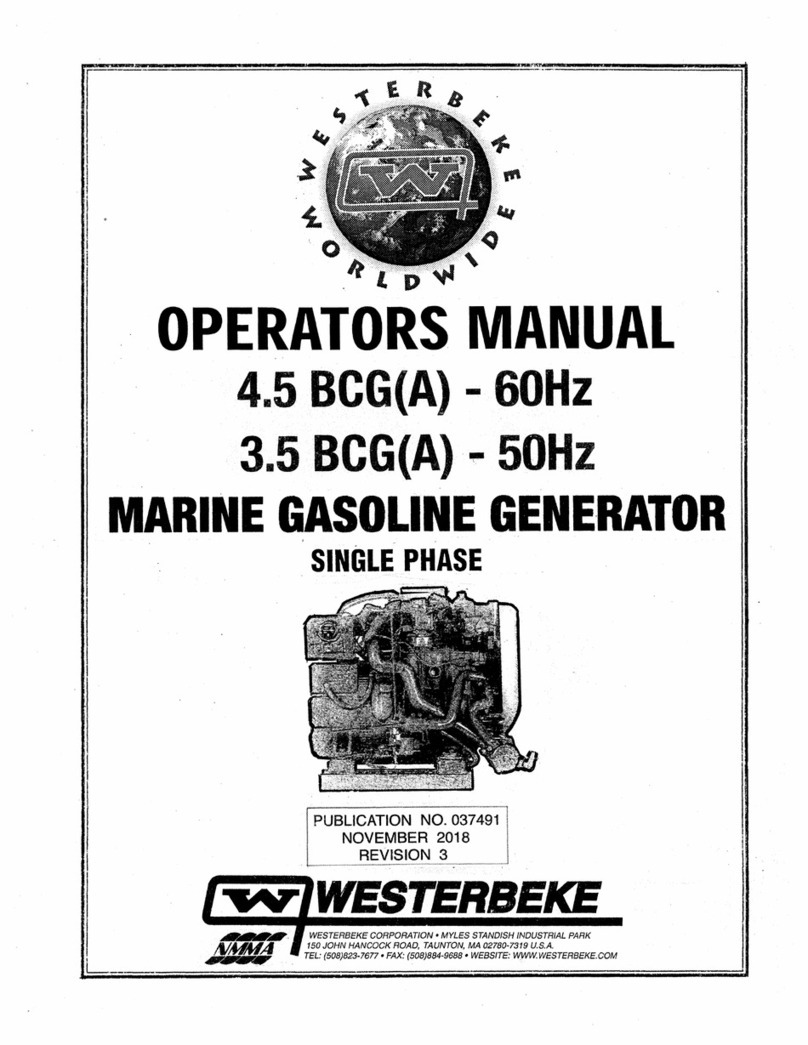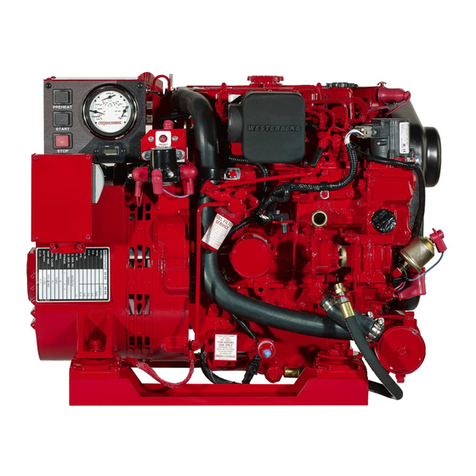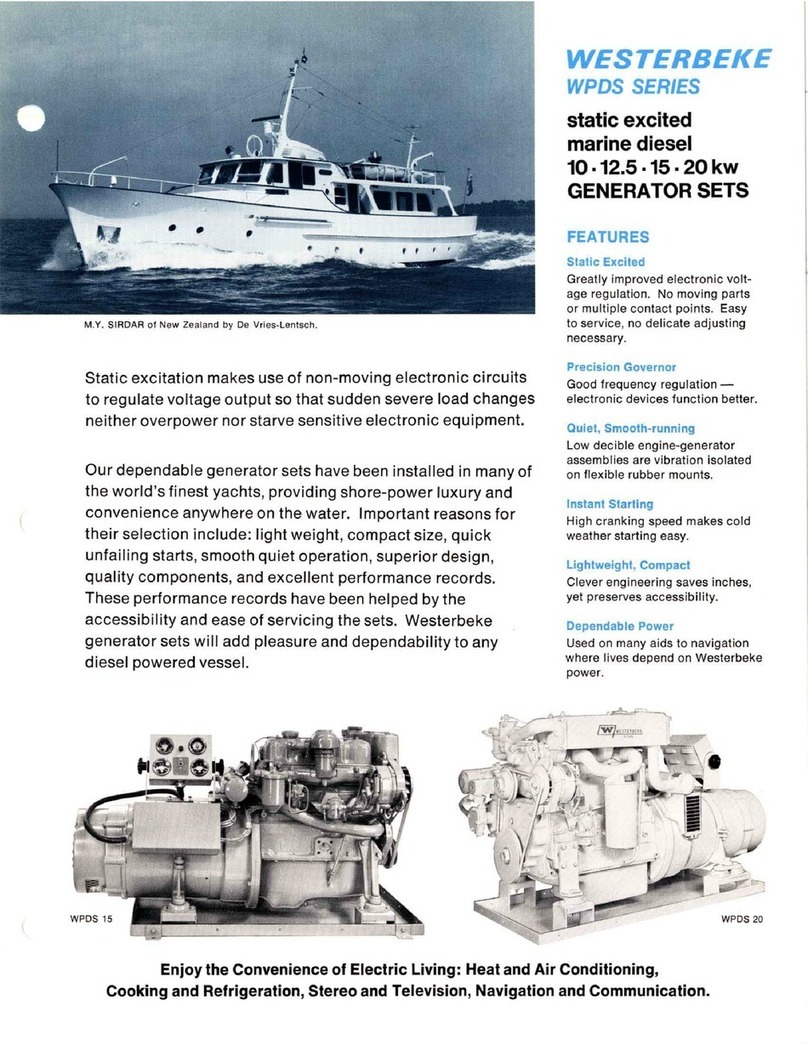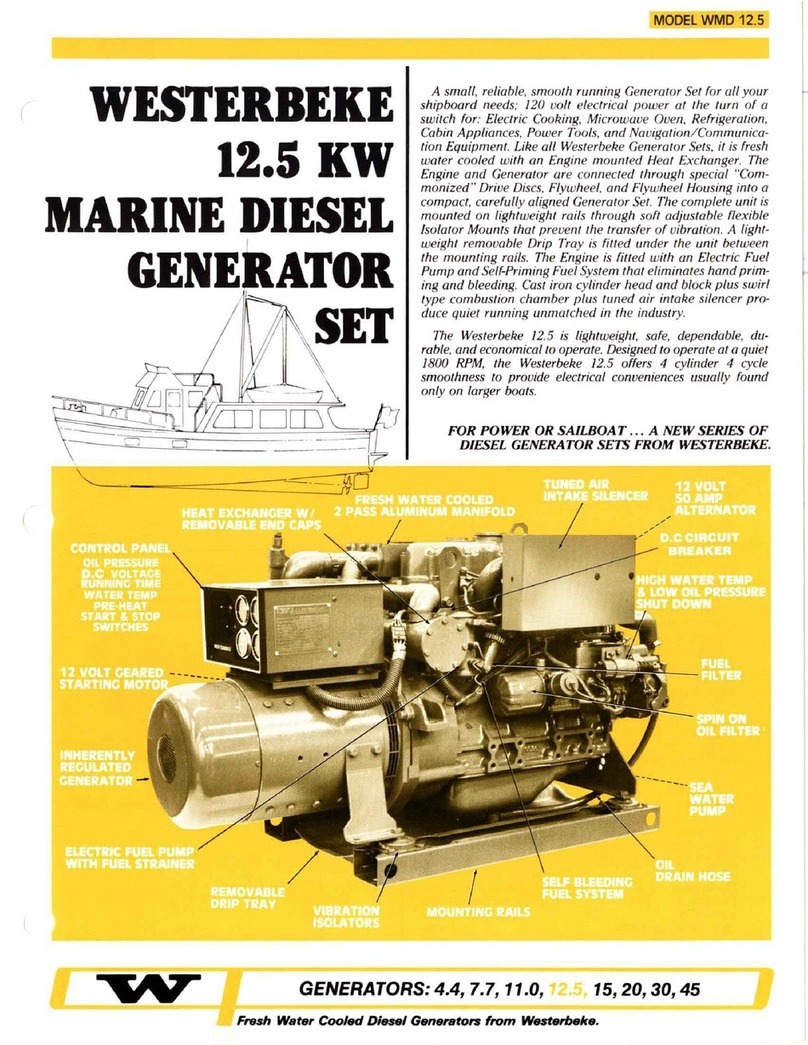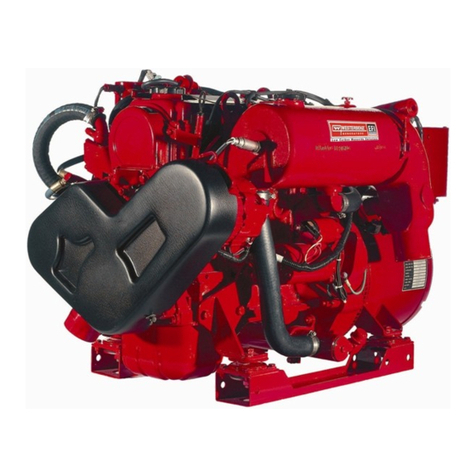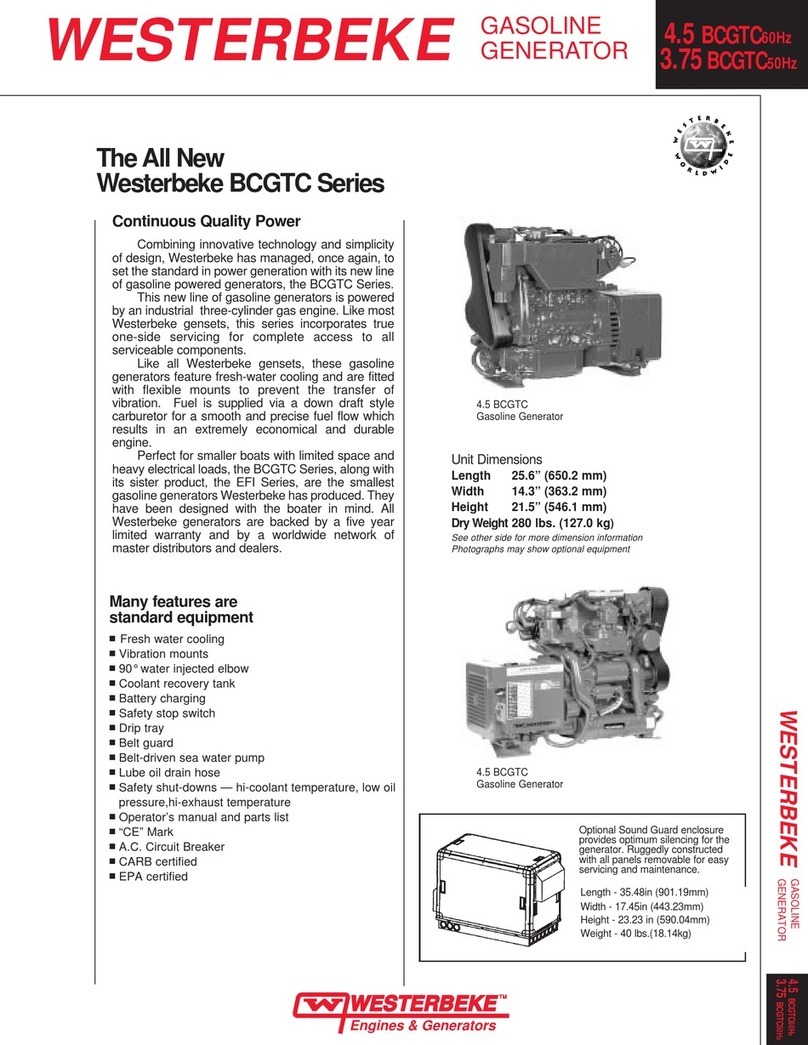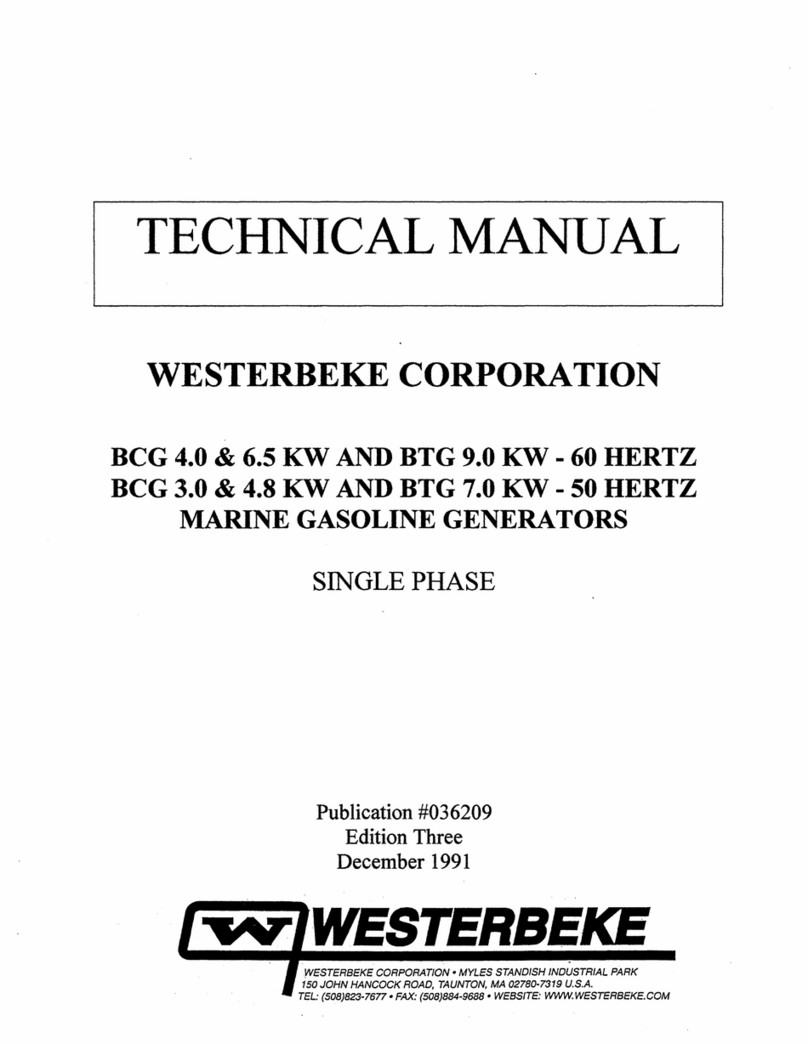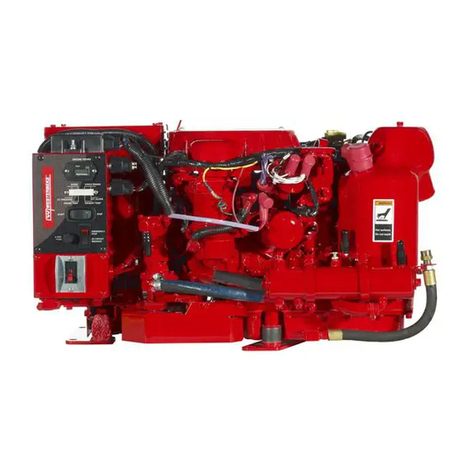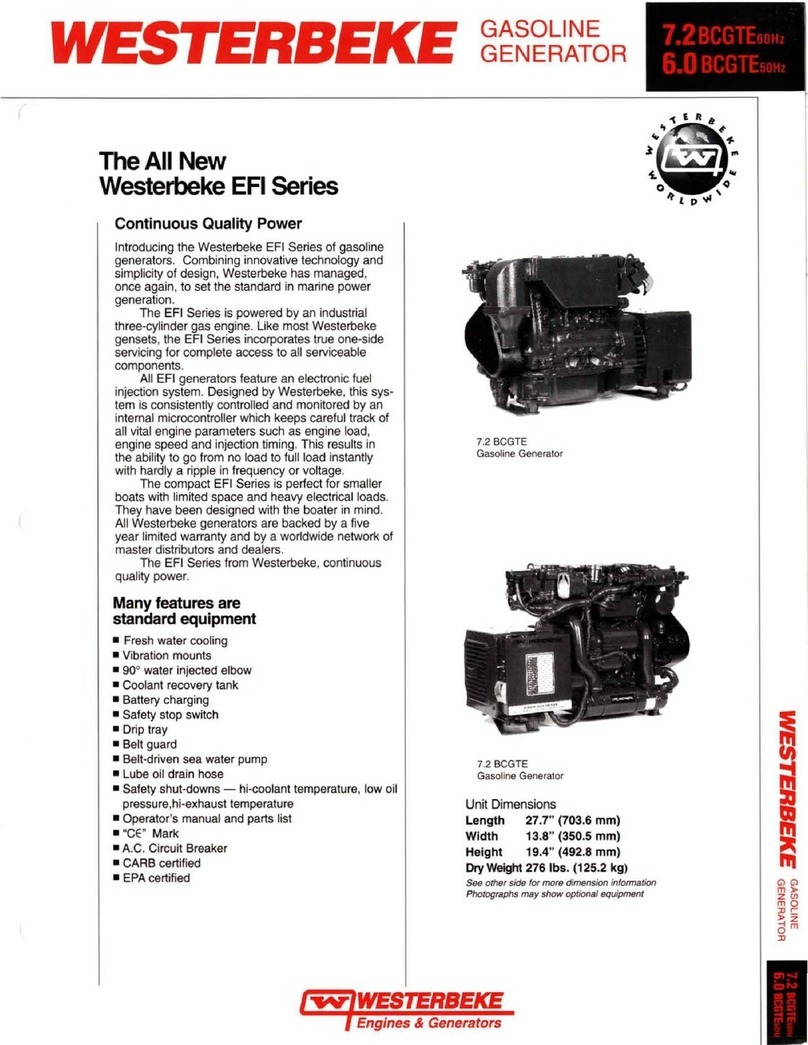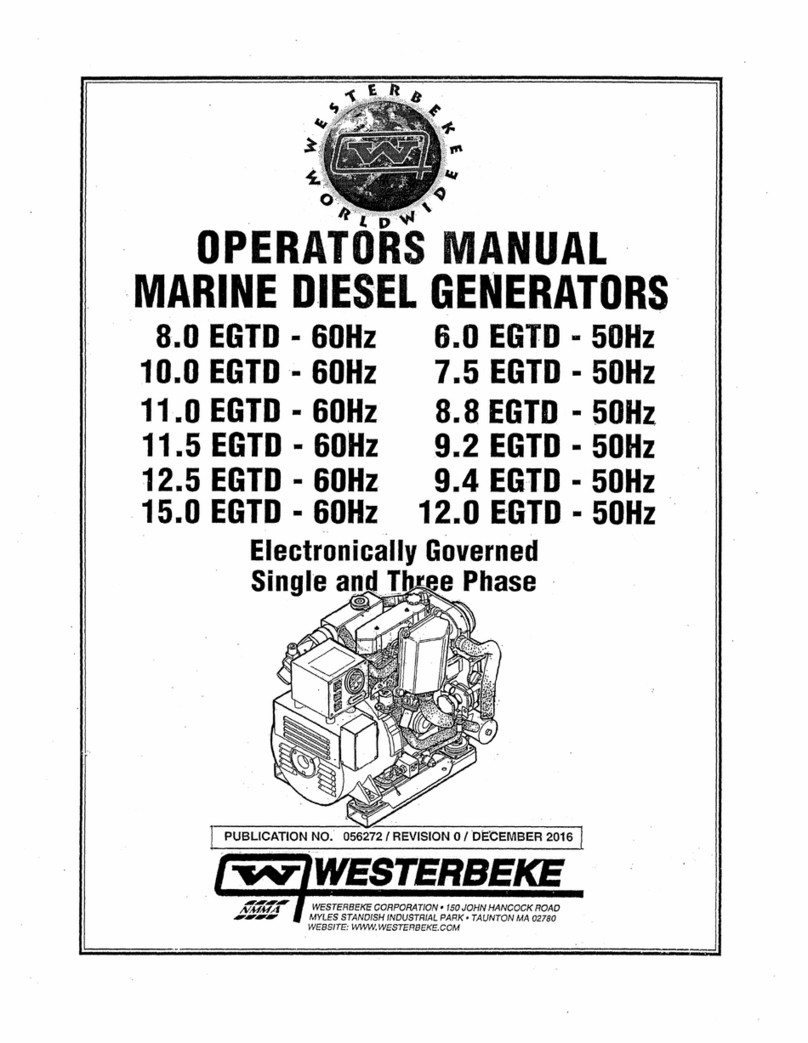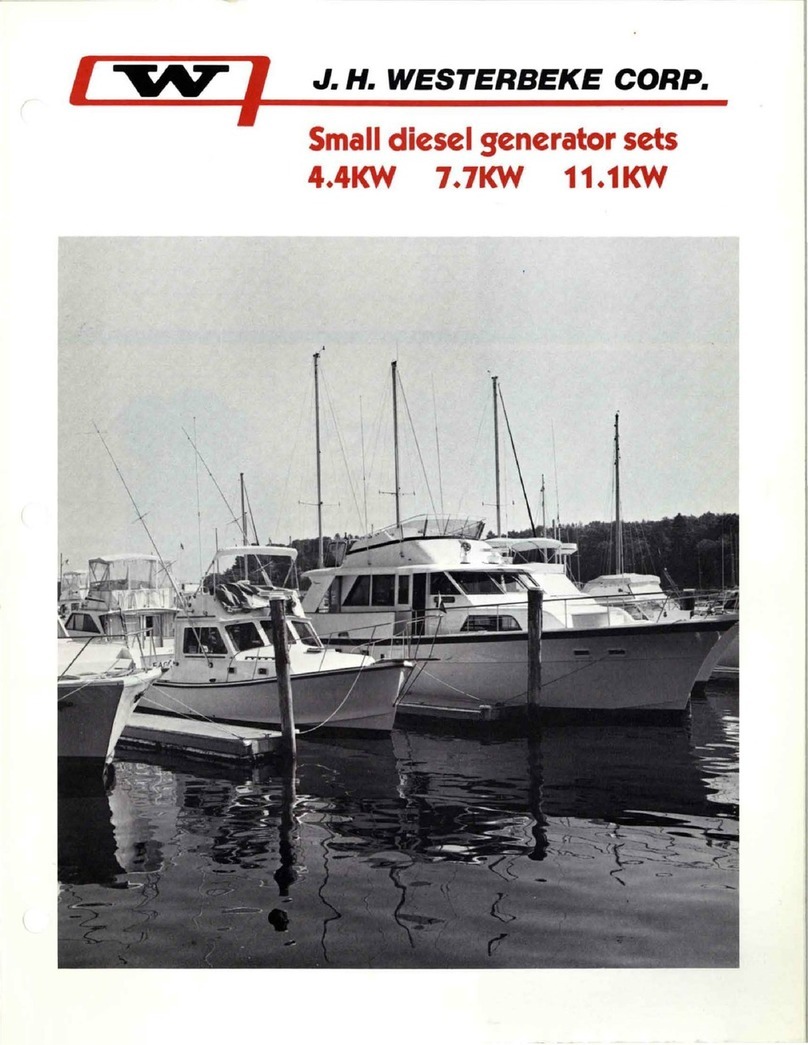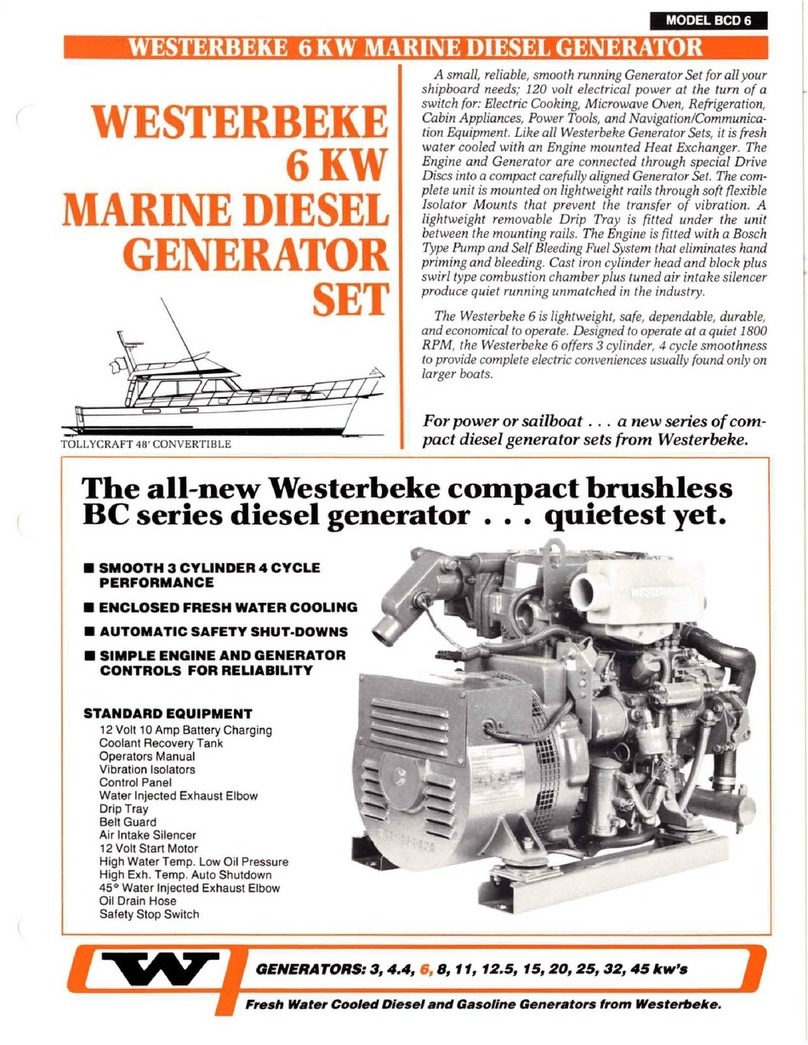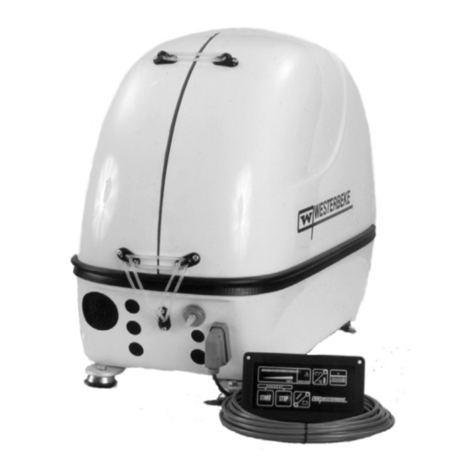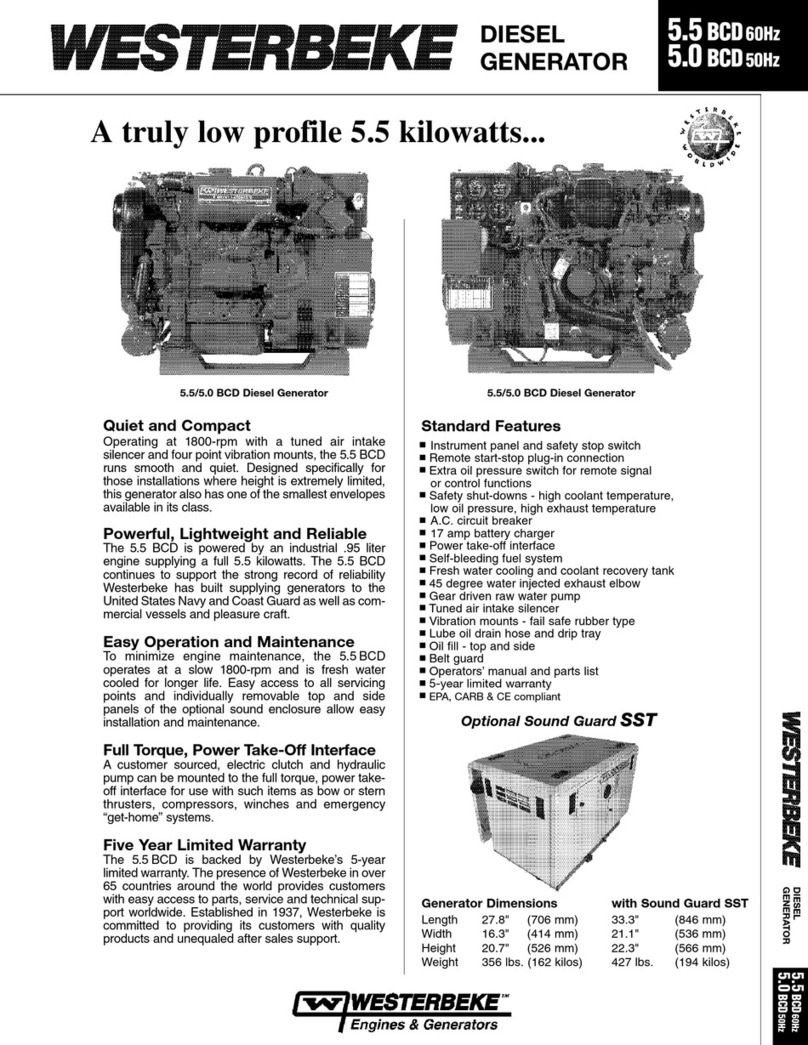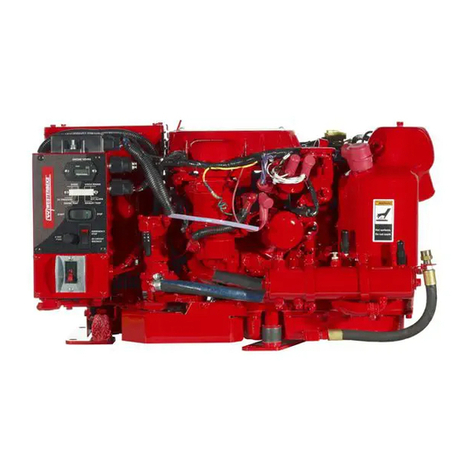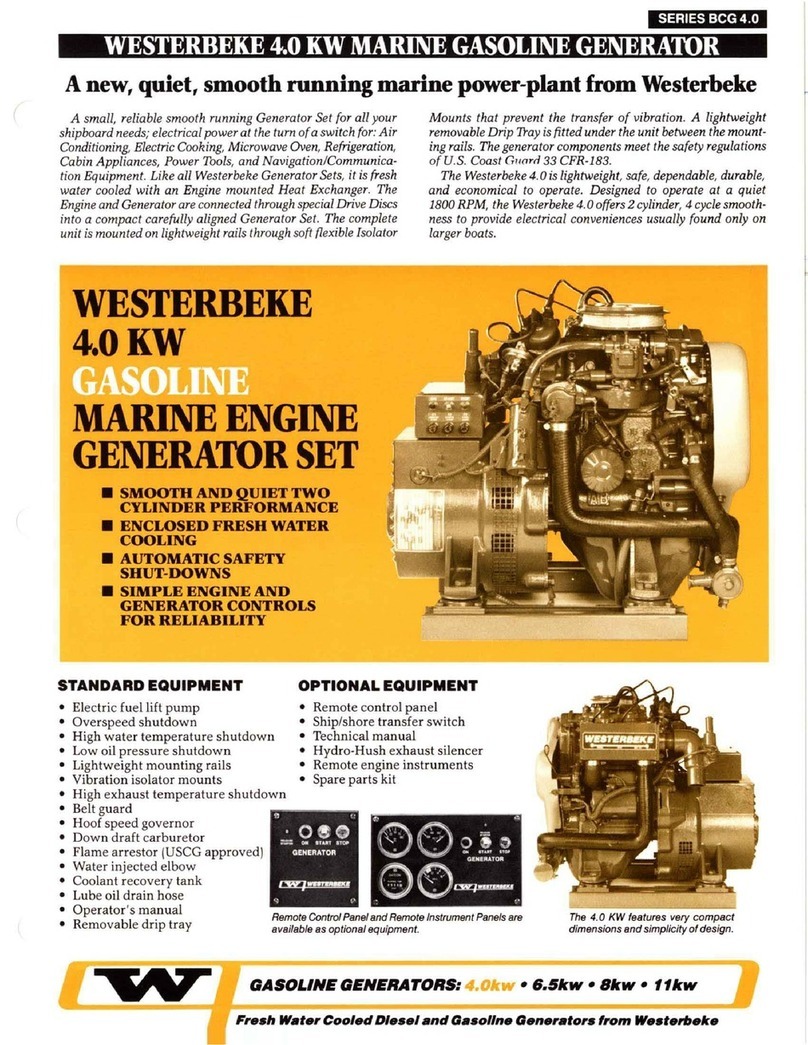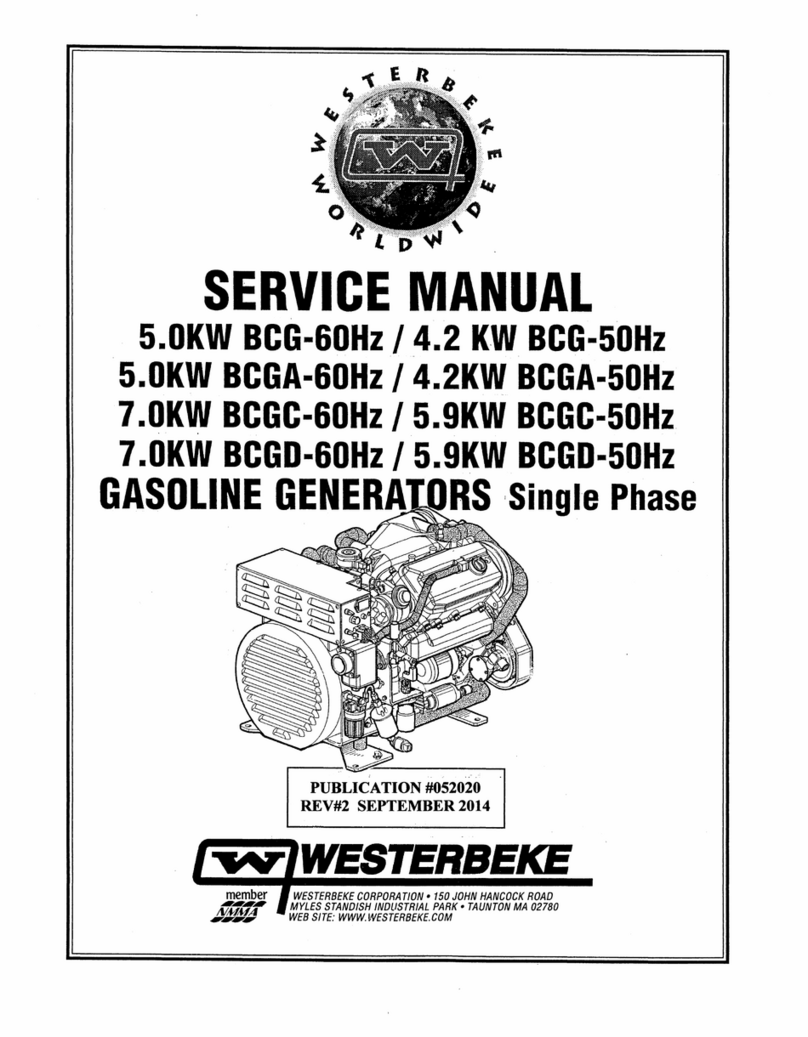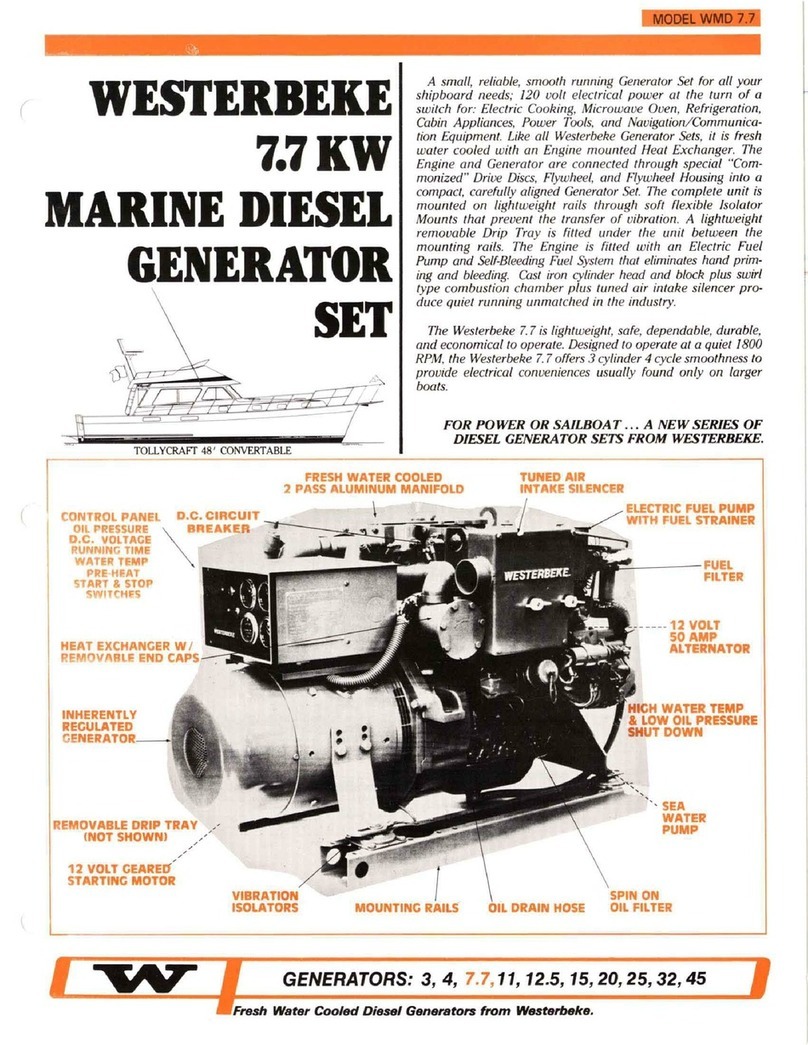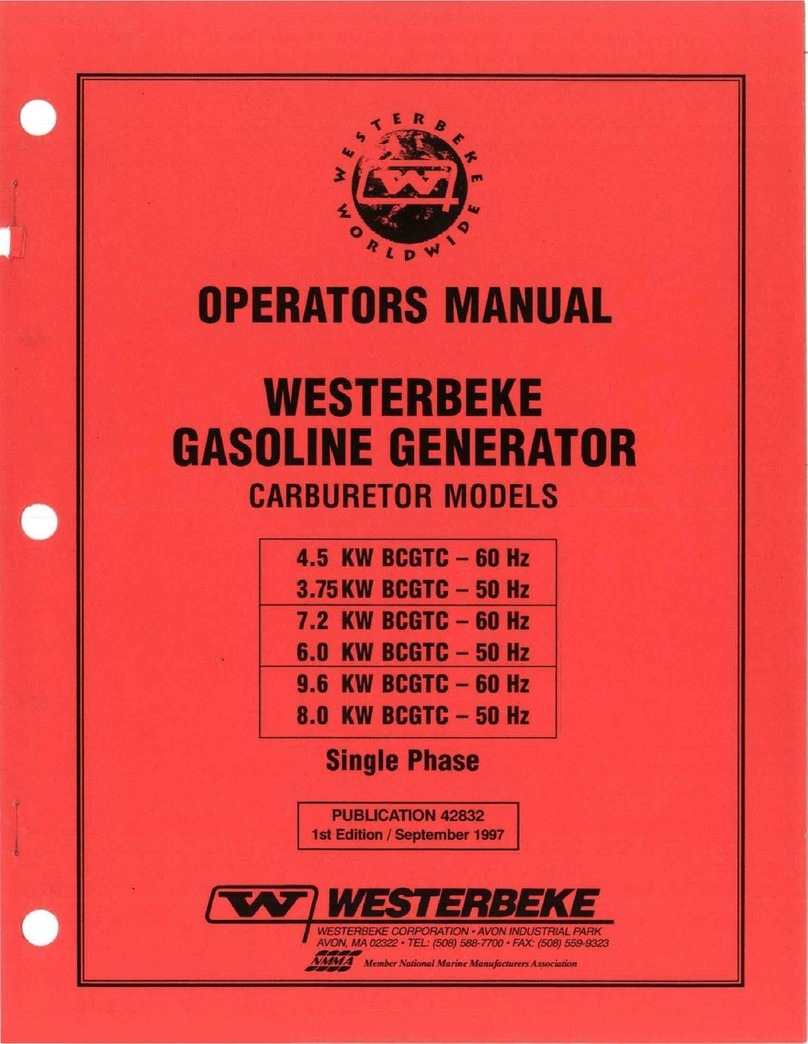
TABLE
OF
CONTENTS
Parts
Identification
.............................................
2
Glow
Plugs
.........................................................
21
Introduction
.........................................................
3 Inspection and Testing.................................
21
Fuel,
Engine
Oil
and
Engine
Coolant..
................
5
Alternators
.........................................................
22
Preparations
for
Initial
Start·Up
.........................
6 Testing and Troubleshooting .......................
22
Control
Panel
.......................................................
7 Battery Care.................................................
24
Manual
Engine Shut-Off...............................7
Starter
Motor
.....................................................
25
Starting/Stopping
Procedure
...............................
8
Remote Panels ...............................................8 .Testing withElectrical Jumper....................
25
Testing with Screwdriver.............................
26
Benerator
Break-In
Procedure
...
:
........................
9 Removing for Service..................................
27
Daily
Routine
.......................................................
9
Raw
Water
Pump
(Exploded
View)
....................
28
Maintenance
Schedule
.....................................
1o
Fuel
System
...........................................
:
...........
12
Cooling
System
..................................................
t3',,
Raw
Water Intake........................................
13
Draining the Raw Water System .................
13
Fresh Water Cooling Circuit.........................
14
Changing the Coolant..................................
14
Thermostat...................................................
15
Raw
Water
Cooling Circuit .........................
16
Heat
Exchanger ...........................................
16
Raw
Water Pump.........................................
16
Engine
Lubricating
Oil
.......................................
17
Engine Oil Change ......................................
17
Water
Heater
Installation
(Optional)
.................
29
Remote
011
Filter
(Optional)
..............................
30
Block
Heater
(Optional)
....................................
.30
Specifications
....................................................
31
Benerator
Information
......................................
.33
Twelve
Lead
Winding
Connections
..................
.34
Electronic
Regulation
(AVR)
.............................
35
Internal
Wiring
Diagram
....................................
37
AC
Outlet
Configuration
.....................................
37
Shore
Power
Transfer
Switch
...........................
.38
Lay·Up
and
Recommissioning.'
..........................
39
Suggested
Spares
.............................................
.41
Engine
Troubleshooting
.....................................
18
Wiring
Diagrams
and
Schematics
....................
.42
Engine
AdJustments
...........................................
19
Drive BeltAdjustment.................................
19
Fuel Injectors...............................................
19
Troubleshooting Instrument Gauges ...........
19
Testing Oil Pressure.....................................20
Checking
Valve
Clearance...........................
20
Valve
Adjustment.........................................20
r.viWE§I"ERBEKE
l Engines & Generators
1
